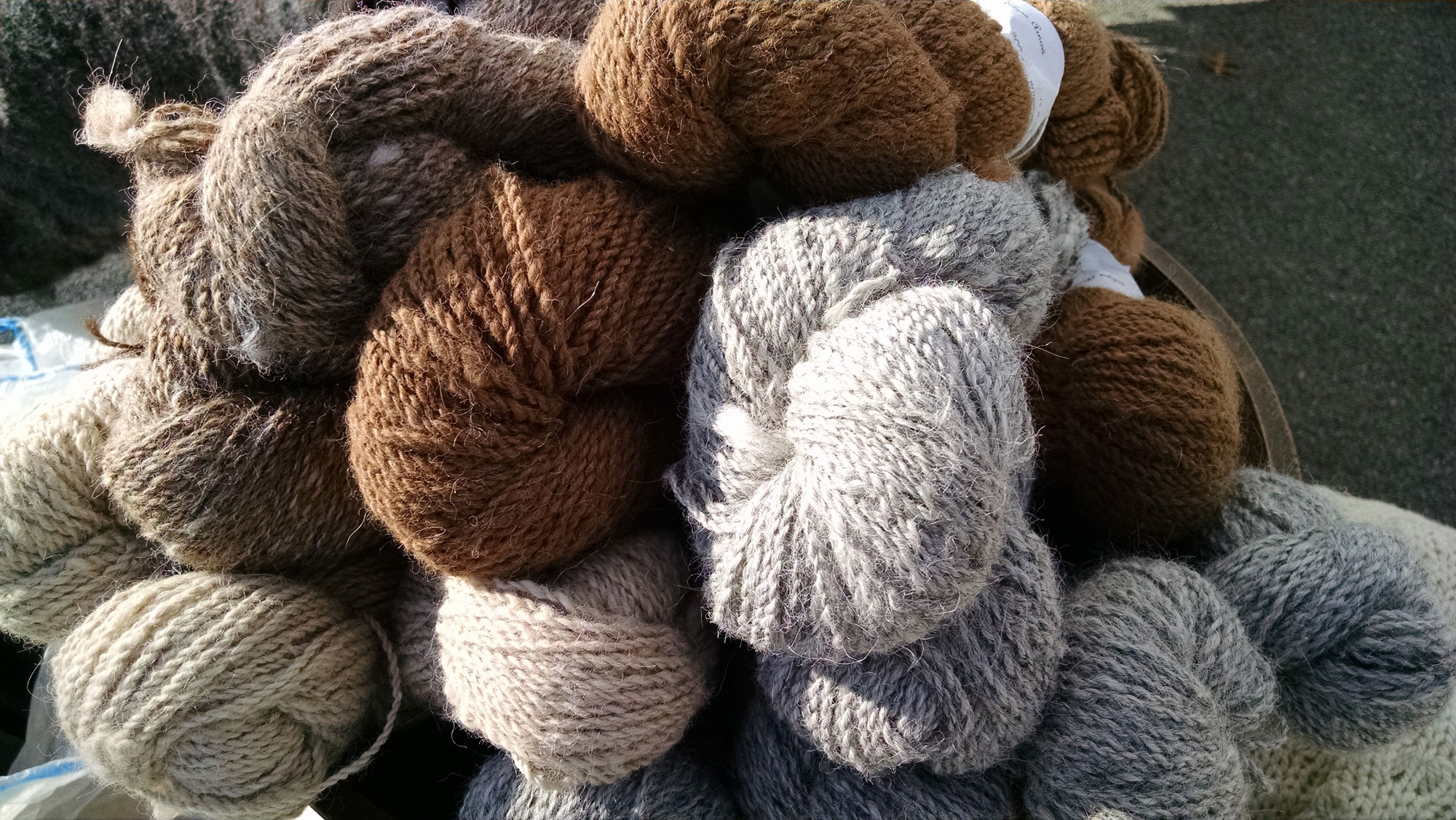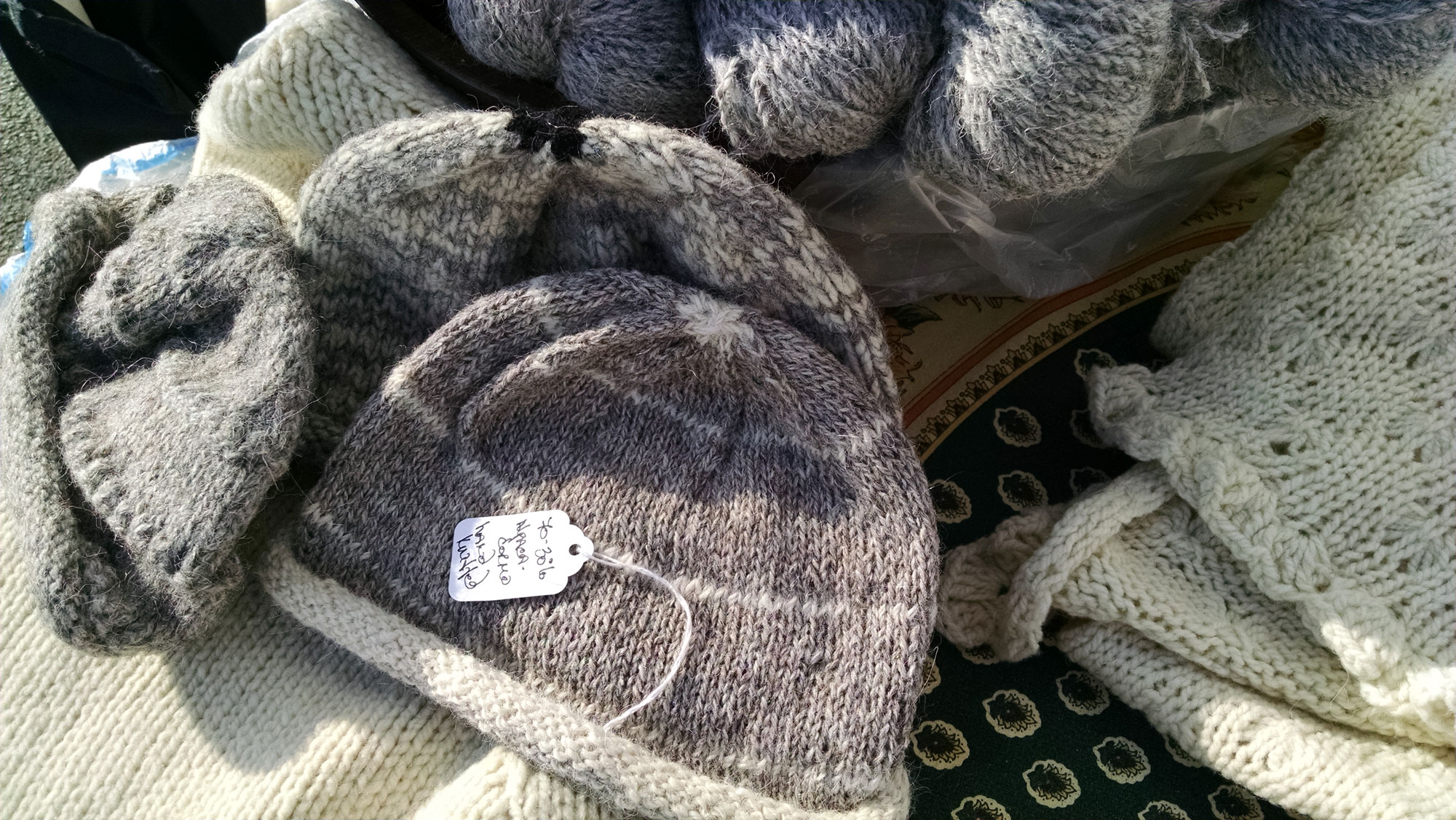Animal Care: Shearing & Fiber
We shear our alpacas in late April or early May. Farmer ‘Joe’ has taken his years of experience shearing sheep and, after seeing how top expert alpaca shearers work, has applied his skills to our animals with fabulous results. Prior to shearing, we wash, blow dry, hand pick and brush the animals with special wands and combs so as not to tear or otherwise destroy the length and texture of the fiber. After shearing, we catch the fiber right off the animals so little organic matter remains. We minimize what is called ‘second cuts’ and make long sweeps to facilitate staple length and fleece unity.
We try to minimize the stress on our animals as they are sheared and immediately let them loose to experience being about 6-8 lbs lighter in a matter of minutes!
As a quality alpaca breeder, we are interested in producing high-density fleeces as it means greater volume and weight per animal. However, we are also interested in quality, consistency, fineness, sheen, all adding up to smooth, what’s called,‘handle,’ that is relished by hand spinners and ultimately by fiber artists working with finished yarns. Although shearing is often viewed as the first step to a fabulous fleece, a healthy animal has had to be maintained throughout the year, giving it time to grow their very own unique fleece. Quantifying or qualifying the character of the fleece has been a topic of much discussion and it may come to some as a surprise that there is no universally accepted standards for evaluating alpaca fiber although there exist quite a few more generalized criteria for evaluating this specialty fiber. Along with the somewhat subjective criteria for evaluating fleece – handle, luster and cleanliness for example – there does exist more objective criteria including various quantitative measurements such as staple growth rate, the diameter of individual fibers, the variance of the fiber throughout the body of the animal, the strength of the fiber, as well as its elasticity, otherwise know as crimp and crinkle. The standard histogram produced by laser scanning of the fiber measures diameter and variance but does not address other characteristics. It is to be noted that histogram results need to be considered in a total context; they should be compared to other animals in the same herd and of the same age, not against animals living on a different diet or of a different age group.
It is important to remember that a fleece is grown by a living creature and is therefore not a static product. When evaluating a histogram or the more quantifiable characteristics of fleece, it is important to understand that environment, stresses, nutrition, aging, pregnancy, levels of hormones in both males and females affect the tenure of a fleece. Interestingly, standard deviation or the coefficient of variation – both measures of uniformity or consistency which is directly related to hair follicle development on the skin – seems to be more influenced by inheritance and less influenced by environmental factors. In contrast, micron counts may increase with a richer diet and decrease as a result of stress and diet. Breeding animals that appear to have little changing pelage over life span and environmental factors can spur more consistent fleeces and fiber production.
Alpaca fiber is generally stronger than sheep fiber with the same micron count although all natural fibers will break with pulling pressure applied to it. Clearly, if natural fiber is too weak to stand up to processing, it will not be very useful. Along with tensile strength, staple length and uniformity of the fibers are critical elements for fiber artists. Fleece annual re-growth in Huacayas may vary from 2 to 6 inches. For best fleece results, it is important to know that the longer a fleece stays on an animal, the more likely it is to get matted, contaminated or show deterioration due to sun bleaching.
Productivity of an animal when it comes to fiber is generally measured by fiber density as well as staple length. Along with its contribution to volume, the greater impenetrability of a dense fleece can decrease the likelihood of contaminants and tip damage due to bleaching. With alpacas, there may be a significant difference in the follicle densities in crias and adults with crias having greater densities due to less skin coverage and the same number of follicles throughout their lifetimes.
Alpaca used as specialty-fiber material should show softness, bulkiness and a lightness of feel. Many breeders believe the presence of uniform crimp or crinkle is a desirable characteristic of fine fleece. For comparison purposes, in some sheep’s wool, the more uniform and higher amplitude of crimp, the finer or perhaps even denser, the fleece. However, in alpacas there is no simple correlation between fineness, density and crimp. The presence of crimp, or the uniform curvature of aligned fiber, although adding to the lightness of feel, overall handling and bulkiness, does not mean that a fleece will necessarily meet top standards.
In our opinion, one of the greatest gifts of alpaca has been in the realm of natural coloration. Alpaca fiber is classified into seven basic pure colors: white, brown, tan, fawn, red, grey and black. Blended coloration results by adding one color to another during processing whether by hand or by mill to arrive at the desired color. Blends are often created to ensure color consistency and volume of a desired color. Market demand for certain colors remains high especially for grays such as our prize winning Macho Man, chestnut browns such as D’Artagnan or Shiraz and the true black of Midnight Marmalade or her daughter Annabelle Etoila.
 Alpacatrax
Alpacatrax 



